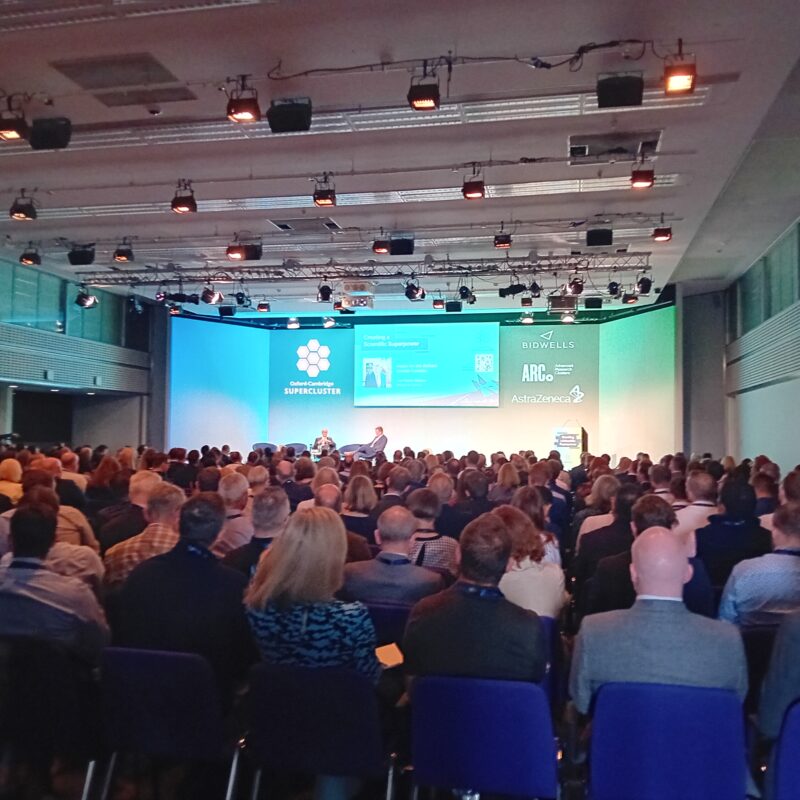On 5th June, a member of the England’s Connected Heartland team attended the Creating a Scientific Superpower conference in London—a gathering of policymakers, researchers, and regional leaders united by a shared ambition: to unlock the UK’s full potential as a global science and technology leader.
The delegate represented two key programmes that are helping shape that future: Oxfordshire’s Digital Infrastructure Programme and the England’s Connected Heartland 5G Innovation Region (ECH 5G IR). Both are critical to the continued growth and resilience of the Oxford-Cambridge corridor—one of the UK’s most dynamic and high-potential economic regions.
While transport, skills, and innovation rightly dominate the corridor conversation, the conference offered a timely opportunity to spotlight a vital enabler that often risks being overlooked: digital infrastructure.
A national vision with local relevance
The conference underscored that the UK’s scientific ambitions depend not only on world-class research, but also on the infrastructure and policy frameworks that allow innovation to thrive.
As Lord Patrick Vallance noted, “If we don’t make the most of the opportunity we are talking about today… other countries will think we have gone mad.”
In Oxfordshire, that opportunity is already being seized—with digital infrastructure forming the backbone of future-ready growth.
Digital Infrastructure as a strategic enabler
Digital connectivity is no longer a luxury—it’s foundational. It underpins every other priority discussed at the conference: economic growth, levelling up, innovation, and regional resilience. Whether enabling hybrid work, powering advanced manufacturing, or supporting smart transport systems, none of it is possible without robust, futureproof digital infrastructure.
Oxfordshire’s Digital Infrastructure Programme
The Digital Infrastructure Programme is about more than broadband—it’s about enabling innovation at scale. From supporting remote healthcare to delivering intelligent transport systems, the programme is laying the foundations for Oxfordshire’s long-term competitiveness and sustainability.
England’s Connected Heartland: 5G in Action
The England’s Connected Heartland (ECH) programme is one of the initiatives of Oxfordshire’s Digital Infrastructure Programme, and exemplifies this ambition in action. Part-funded by DSIT as a 5G Innovation Region, the programme is piloting a managed private 5G network along the Bicester to Bletchley section of East West Rail. This will not only enhance onboard connectivity for passengers but also extend high-speed mobile access to isolated farms and rural communities. It’s a UK-first, scalable model for how digital infrastructure can be deployed alongside rail—without placing additional cost on the public purse—while tackling digital exclusion in hard-to-reach areas.
At Harwell Science and Innovation Campus, another ECH project is delivering a cutting-edge 5G Mobile Private Network in partnership with Vodafone. This high-speed, secure network will support advanced manufacturing, connected instrumentation, machine-to-machine (M2M), Internet of Things (IoT), and real-time data applications across one of the UK’s most dynamic science parks.
By enabling seamless indoor and outdoor connectivity, the project will help organisations on campus—from quantum computing to clean energy—unlock new levels of productivity and innovation. It’s a replicable model for embedding digital infrastructure into science and innovation campuses to drive regional growth and global competitiveness.
Why this matters
Digital infrastructure must be seen as core to corridor planning—not an afterthought. To be truly future-proof, digital connectivity requirements need to be embedded from the outset in all relevant developments, from transport to industry.
The Oxford–Cambridge corridor has enormous potential to become a global innovation powerhouse. But to stay competitive, it must offer world-class connectivity—not just in cities, but in market towns and rural communities too.
Without urgent action, there’s a real risk that digital disparities between urban and rural areas will widen—undermining both economic inclusion and productivity. The corridor already contributes over £40bn to the UK economy. With the right investment in digital infrastructure and innovation, that figure could double by 2035.
Cross-departmental coordination—especially between DfT, DSIT, DLUHC, and local authorities—will be essential to making this vision a reality. Attending the conference was a valuable opportunity to connect with others working toward the same goals, share Oxfordshire’s story, and bring back insights that will help shape the next steps. If the Oxford–Cambridge corridor is to lead the UK’s next phase of economic growth, we must ensure it’s not just physically connected—but digitally connected too.


